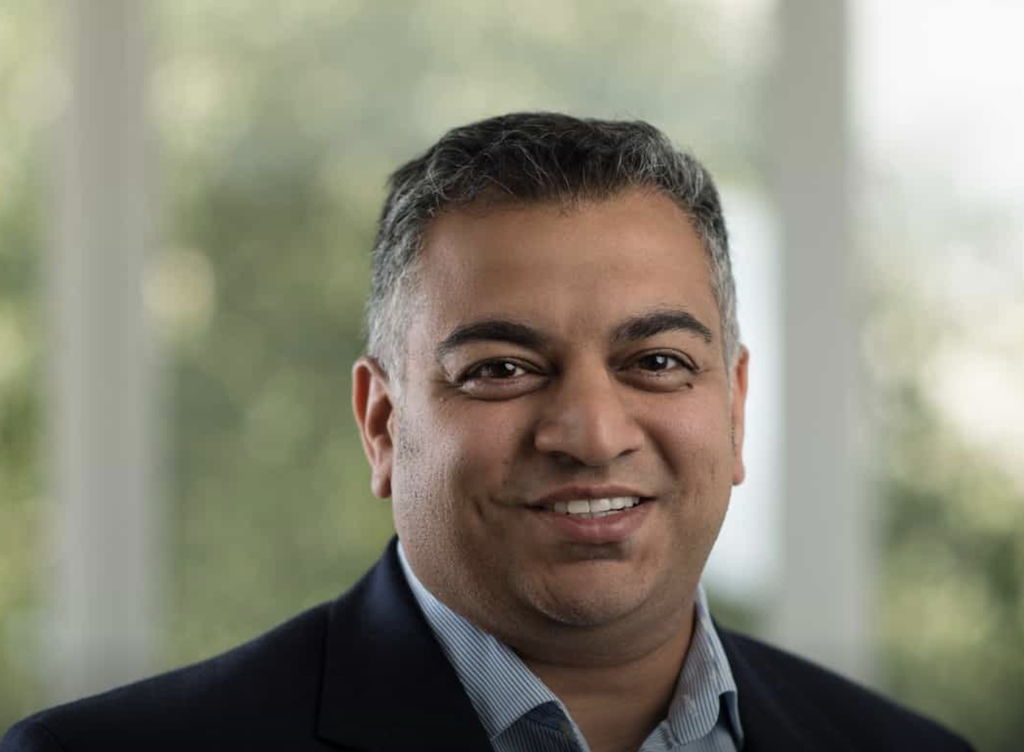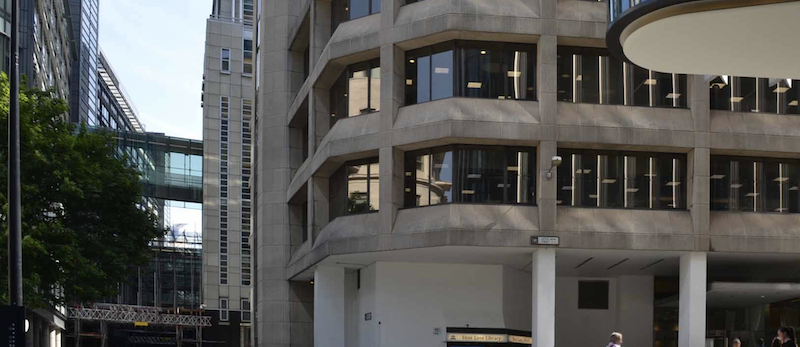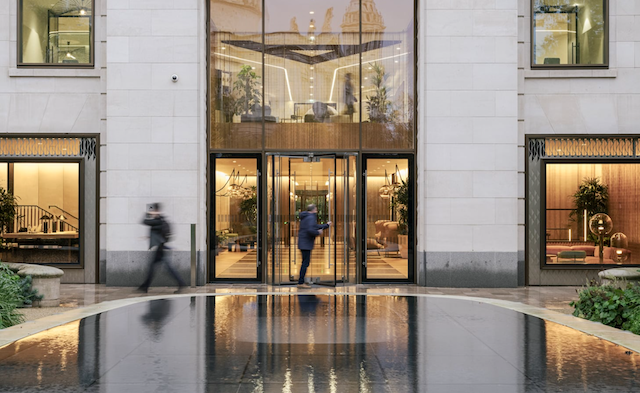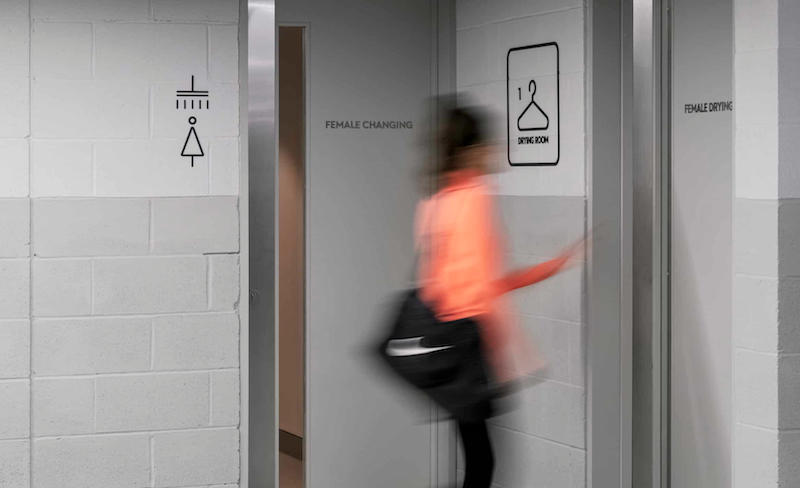Post
New developments in the Square Mile: Q&A with Shravan Joshi, City of London Corporation’s planning and transportation committee chair
20 Jun 2024
Shravan Joshi leads on all planning issues affecting the Square Mile, including heading the discussion and debate on planning permissions for new developments in the City.
He also covers the City Corporation’s Transport Strategy and its responsibility as highways authority. Joshi is also responsible for the City Corporation’s City Plan 2040, which looks into the changing ways in which we use space.
He sat down with Fiona Keating, London Society content curator to talk about new developments and plans for the future of the capital.
Is it difficult to get a committee of 35 people to make decisions? How does it all work?
There’s always a tension building up to any sort of planning committee meeting, what's going to happen. Everyone has a view. But we try to remain impartial. I think we're lucky in that having a large committee actually means that there are very few aspects of an application that get missed. People will be coming from different angles. We have people with a passion for sustainability, and we have others who have a background in engineering. And we have architects on the committee as well, who talk about the aesthetics, material use and impact on the environment. I don't see my job as being the decision maker. It is very much guiding the committee to reach the right decision.
Check out our rundown of upcoming events
Has your past experience helped with your role as planning and transportation committee chairman?
My background is in the energy sector, and absolutely nothing to do with property or planning. Actually learning on the job has been really informative. I enjoy expanding the depth of understanding you get from studying the applications and challenging officers and asking have you done XYZ? I like accumulating that knowledge. So I love that aspect of it.
Are there any particular projects that you're particularly excited by?
The city has changed dramatically. And where I’ve seen the biggest pivot is around culture and heritage projects coming through. So the New Museum of London, for example is a really exciting project.
Are there any less well-known schemes currently going on?
There are a number of retrofit schemes that we've done. I think out of a total of about 34 schemes in London last year, 17 of them were in the city. These are major retrofit schemes. They don't get talked about. And it's such a shame, because when you look at the detail of those schemes, they are absolutely brilliant. The amount of engineering, insight and innovation that people have to apply to realise those retrofit projects is on another scale. It's almost easier to knock the thing down and build it up.
Other interesting projects include Hill House, which recently got planning permission. Beside it is a little pocket park square. There’s amenities for people to get some sanctuary, away from the hustle and bustle of the city, and just have a quiet moment. One that really sits in my mind is 25 Cannon Street, just near St Paul's. They’ve got a reflection pool and gardens, which have become an Instagram phenomenon.
Do you think London workers will ever go back to being in the office five days a week?
We’ve run the stats on this. Fridays were dropping off from around 2015 so the working one day at home approach was already in play by the time we got to 2020. We'd already seen a slowdown on the Friday. I think it was probably catalysed by lockdown. We've done all of our projections on future demand based on the hybrid working model.
We commissioned a report from Arup to feed into our local plan, to look at future office demand. And the model we took into our local plan was the hybrid working model. There’s a demand for about 1.2 million square metres by 2040.
There are also differences, so the insurance and legal sector have client-facing roles, whereas sectors like tech are more akin to remote working. I think overall, we're about 80- 85% of pre-pandemic footfall right now. We have seen the reimagination of the Friday to Monday economy in the city, and how you activate cultural sites, food and beverage, the experiential pieces of the city that draw people in. And we've seen 120% increase in footfall on the weekends. We want to do more of that. We want to get school children here, as well as tourists and families exploring the Square Mile.
One of the campaigns that the London Society supports is accessible public toilets. What is the City of London Corporation doing?
I think it's a really important piece of the puzzle. If we're going to be accessible and inclusive, we need to make sure those public facilities are there. When we look at new buildings, that's our opportunity of planning to put those in. And to make sure people don't feel intimidated walking into those buildings, that they are open and accepting and welcoming in that way. That's something we can do. We’re looking at reimagining the ground floor plans anyway, so I think those communities are critical if we're going to realise different demographics of visitors.
Your role is far-reaching. Can you explain what this entails?
We look after planning in the city of London, and there's a political decision that needs to be made with applications. I chair the committee that makes those political decisions. We listen to officer recommendation, applicants and objectors. Then we'll come to an informed decision at the end of that process.
The other part of my role is the transportation side. There's the quirkiness of the city in that we own and control a lot of our road systems networks. So whilst we obviously incorporate the TFL wholeheartedly, we drive a lot of change in our highways. Obviously, there are road routes that TfL control, but we also look at the impact on the built environment in the city.
How do you see the City of London in the future?
One of the things that we are doing more of is opening up the ground floor to make buildings accessible so they're not fortresses. I was talking to a developer who's moved the office entrance completely to the periphery of the building, completely opening up the ground floor, and they've turned it into a market hall.
There’s a couple of fundamental building blocks that we have to get right. I think you're going to see a lot more pedestrianisation alongside public transport. We’re going to see the type of buildings change dramatically as well. I think they can be much more in tune with nature. More green buildings, and not just sustainable green buildings, but buildings that have flora and fauna and are living, breathing buildings, rather than enclosed glass and steel. The city will look and feel different.



